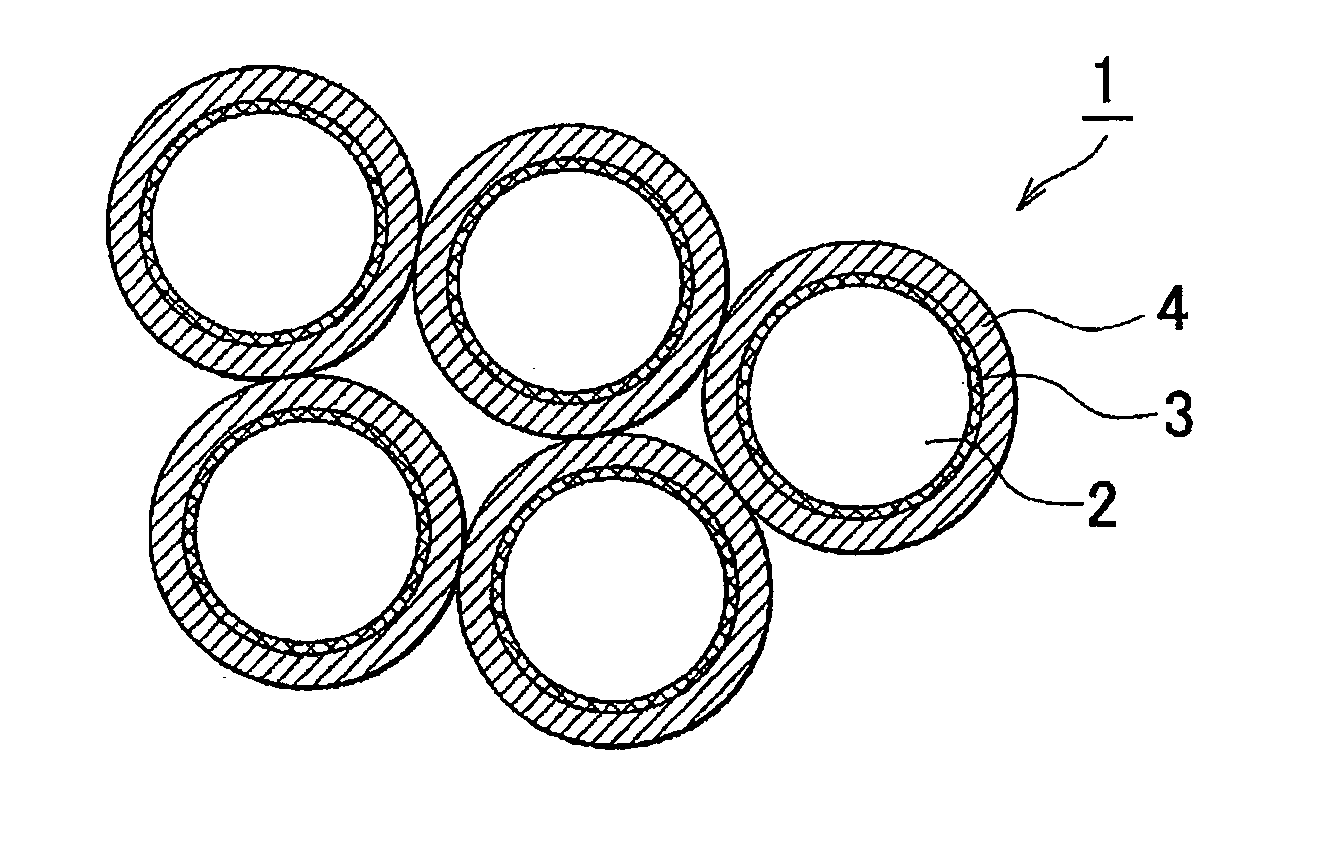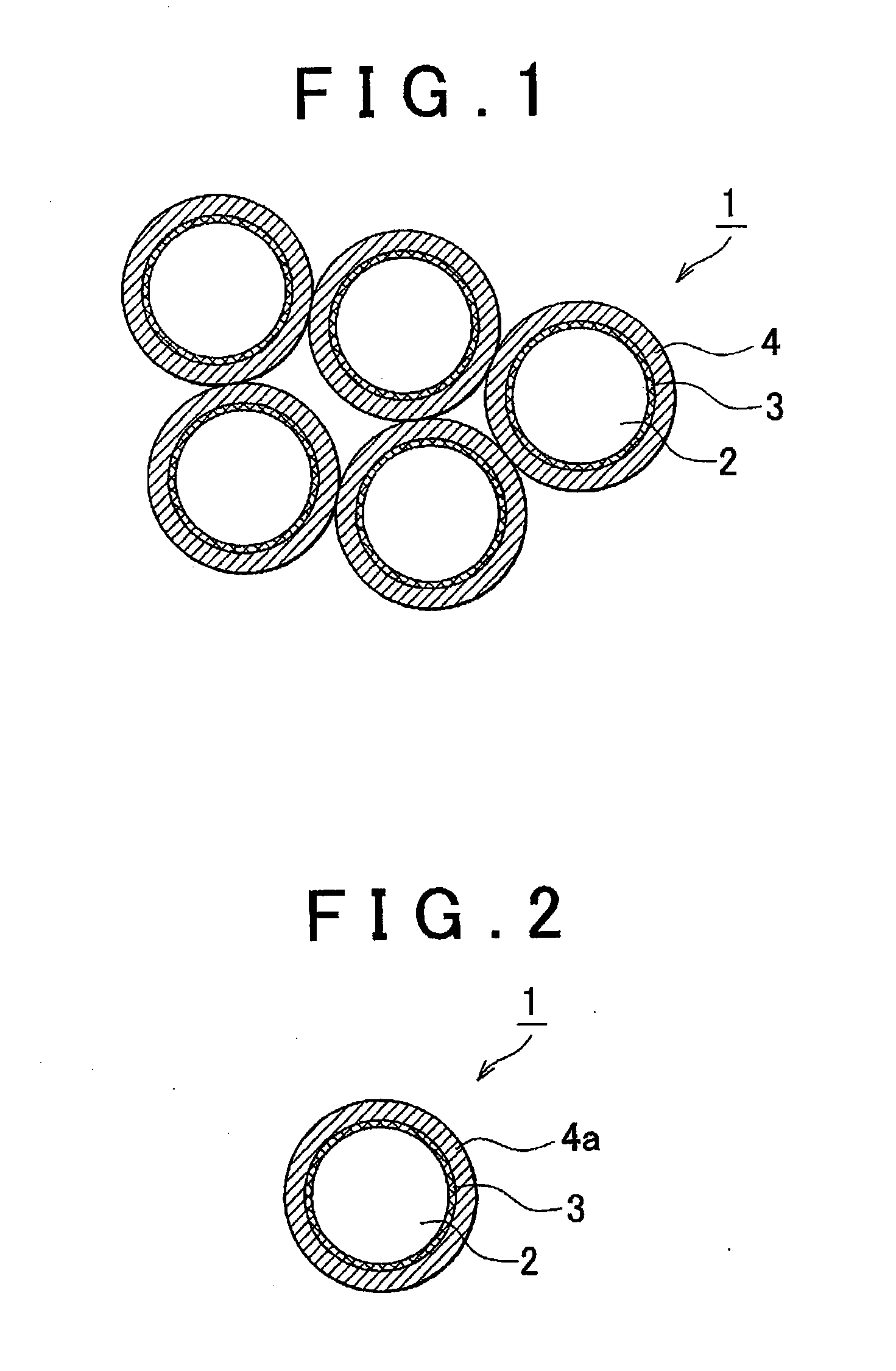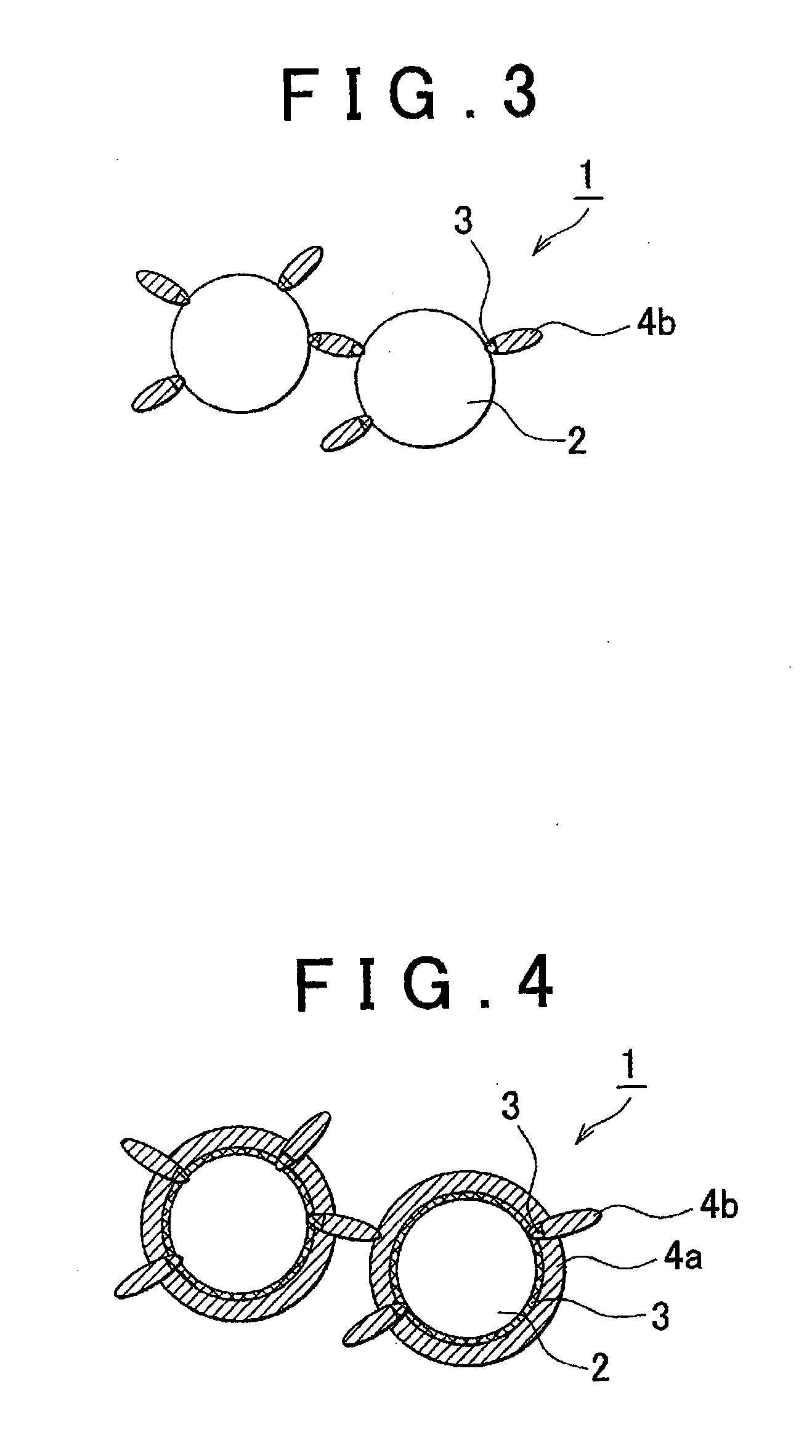Negative electrode active material, lithium secondary battery using the same, and method of manufacturing negative electrode active material
a technology of active materials and active materials, applied in the direction of non-aqueous electrolyte accumulator electrodes, cell components, electrical apparatuses, etc., can solve problems such as difficult relaxation of stress, achieve effective suppression of improve cycle characteristics, and suppress cracking of tin particles
- Summary
- Abstract
- Description
- Claims
- Application Information
AI Technical Summary
Benefits of technology
Problems solved by technology
Method used
Image
Examples
example 3
[0149]A lithium secondary battery was made in a way the same as that of Example 2, except that acetylene black (AB) was used instead of carbon nanotubes (CNT) and the amount of AB was 20 wt % relative to the total amount (100 wt %) of Sn and AB in the process of preparing the negative electrode active material of Example 2.
example 4
[0150]A lithium secondary battery was made in a way the same as that of Example 2, except that the amount of CNT was 0.5 wt % or 1 wt % relative to the total amount (100 wt %) of Sn and CNT in the process of preparing the negative electrode active material of Example 2.
[0151]Evaluation
[0152]The cycle characteristics of the coin cells of Examples 2 to 4 were evaluated in a way similar to that of Example 1. Table 2 shows relations between the number of cycles during which the ampere-hour capacity was maintained, and heat treatment time and the amount of CNT. The number of cycles during which the ampere-hour capacity was maintained was determined based on the point at which the rate at which the ampere-hour capacity was maintained became equal to or less than 50%. In addition, the amount of CNT and the capacity of the coin cells of Examples 2 to 4 were compared. Table 3 shows the energy densities.
TABLE 2The number of cycles during which ampere-hour capacity is maintainedExample 3Exampl...
example 6
[0160]A lithium secondary battery was made in a way the same as that of Example 5, except that only carbon nanotubes (CNT) were mixed into Sri powder and no acetylene black (AB) was mixed thereinto in the process of preparing the negative electrode active material of Example 5.
[0161]Evaluation
[0162]The cycle characteristics of the coin cells of Examples 5 and 6 were evaluated in a way similar to that of Example 1. Table 4 shows relations between the number of cycles during which the ampere-hour capacity is maintained, and heat treatment temperature and the amount of AB. The number of cycles during which the ampere-hour capacity is maintained is determined based on the point at which the rate at which the ampere-hour capacity is maintained becomes equal to or less than 50%.
TABLE 4The number of cycles during which ampere-hour capacity is maintainedHeatExample 6Example 5TreatmentAB amount (wt %)Temperature (° C.)051020Remark150150130150160ComparativeExamples350220160270200Examples ofth...
PUM
 Login to View More
Login to View More Abstract
Description
Claims
Application Information
 Login to View More
Login to View More - R&D
- Intellectual Property
- Life Sciences
- Materials
- Tech Scout
- Unparalleled Data Quality
- Higher Quality Content
- 60% Fewer Hallucinations
Browse by: Latest US Patents, China's latest patents, Technical Efficacy Thesaurus, Application Domain, Technology Topic, Popular Technical Reports.
© 2025 PatSnap. All rights reserved.Legal|Privacy policy|Modern Slavery Act Transparency Statement|Sitemap|About US| Contact US: help@patsnap.com



